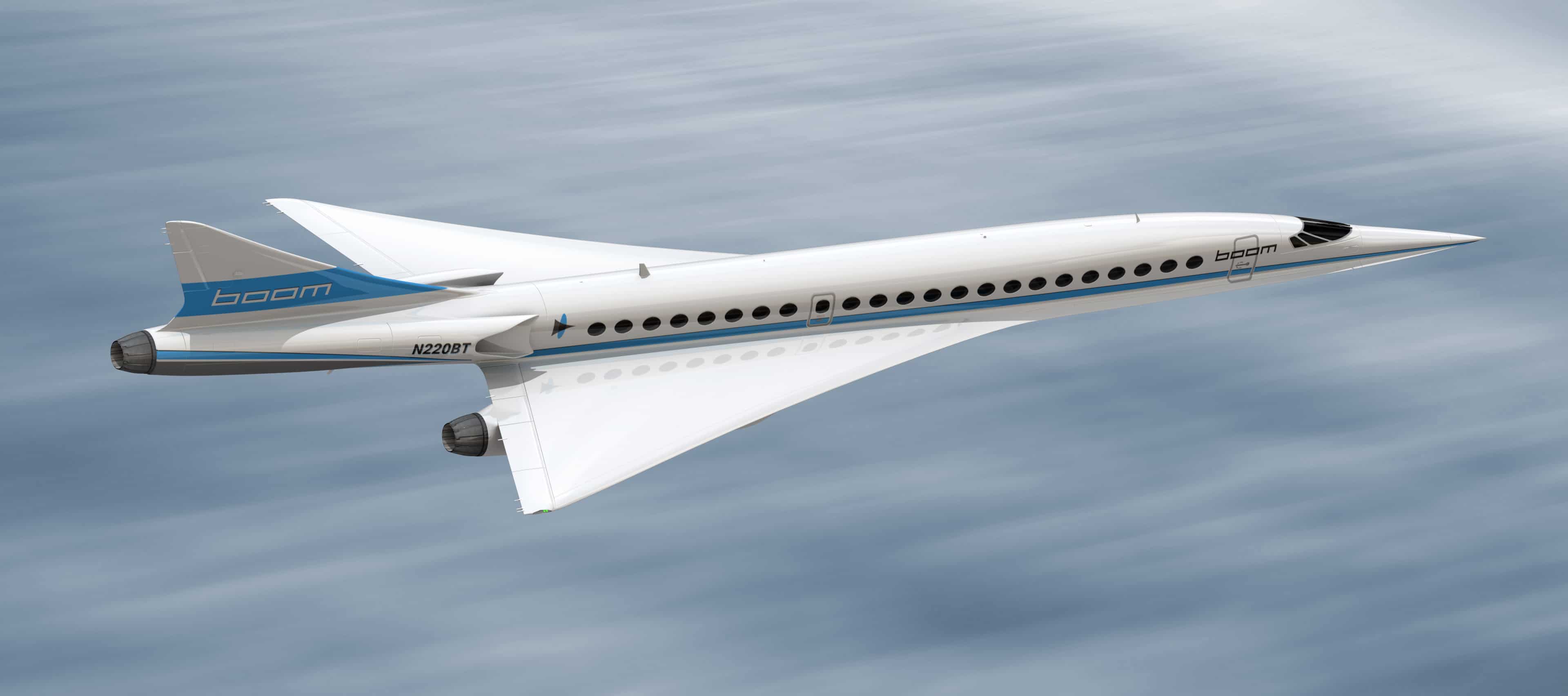 Stuart Nathan
Stuart Nathan
Features Editor
The Engineer is observing with interest Sir Richard Branson and Virgin Galactic's support for a new supersonic passenger aircraft.

It's 69 years since Chuck Yeager became the first human being to travel faster than sound, and since that time such speeds have been accessible to civilians for only the relatively short window of Concorde's operation. As we have reported in The Engineer, development of supersonic passenger planes is ongoing, with NASA, Airbus, Boeing and Lockheed Martin all working on new technologies. We can now add a new name to that list, with yesterday's unveiling of a prototype from Denver-based start-up Boom, backed by none other than Britain's very own bearded Cavalier, Sir Richard Branson.
Boom, headed by pilot and former Amazon executive Blake Scholl, is developing an aircraft which will seat 45 to 50 passengers (about half of Concorde's capacity). Scholl claims that these seats will cost about the same as a business class fare; around $5000 for a 3.5 hour flight from London to New York, for example. He also claims that, because Boom, unlike larger civil aerospace companies, is not developing new technologies for its aircraft that would need special approval from regulators, he will beat them into the air. Scholl claims that commercial services could start by 2023.
Branson has not said how much his Virgin company is investing in Boom, but the manufacturing arm of Virgin Galactic is to provide engineering and manufacturing services along with flight test support and operations, and Virgin has an option on Boom's first 10 airframes. The prototype uses modern engine technology and lightweight composite materials and is claimed to be relatively cheap to operate; cheap enough, at least, for that $5000 ticket price to represent a workable profit margin.
There will always be those who insist that there is no need for supersonic travel. What's wrong with teleconferencing, they ask. Is there anything that's really so important that (taking time zones into account) anyone really needs to fly from London to New York and arrive effectively 90 minutes before they left? Isn't it more sensible to spend your $5000 on a nice comfortable seat in a wide-bodied jet, watch a few films and have another glass of champagne? And by every rational argument, they are of course correct in every respect apart from the one that says travel is unnecessary. In many cases, there is simply no substitute for being there in the flesh. Everybody knows that a face-to-face meeting is more productive than a telephone conversation; the same is true of teleconferencing, and anybody who has tried to conduct a conference where one or more of the attendees is only there virtually will know how difficult it is (and it's no better when you're the virtual attendee).
Concorde's days were almost certainly numbered even before it had been removed from service in 2003 following the crash in July 2000 and subsequent drop off in passenger numbers. It was not profitable and, towards the end of its service life, functioned more as a prestige PR project for British Airways and Air France. But in many ways, this was more because it was too large for the demand for supersonic flight and its technology had become outdated; it was terrifically fuel-hungry, notoriously noisy and expensive to fly. It was not practical at the time to go back to the drawing board and make a smaller aircraft; but the demand to break the sound barrier (mostly for business reasons) was undoubtedly there, and enough people believe it still is to justify the many new projects to develop "executive jets" capable of supersonic speeds.
Whether the demand is for an aircraft with six passenger seats, say, or 45 is something that only the market can reveal; paradoxically, of course, it's unlikely that we could know this unless the service is actually launched. But as a technology magazine, we have to applaud the attempt. It's always seemed (to me at least) a shame that the end of Concorde spilled a regression to a 1960s paradigm of passenger flight even though the aircraft were in many respects far more advanced and, for example, quieter and more fuel-economical. My favourite description of Concorde was that it was a view through a slice cut into the future, but it turned out not to be our future. Well, it should have been. If Blake Scholl's vision proves accurate, it might wrench us back to the path the 1960s visionaries who conceived Concorde saw for us.
The Engineer has not always been the greatest fan of Richard Branson. Too many of his projects have been for personal glory rather than, as he claims, to advance the capabilities of mankind; many of our memories of using his train services are ones of discomfort and frustration, and for those who object to The Engineer taking tangents into politics, I'll refrain from expressing my opinion on Virgin's enthusiasm for taking over services from the NHS. It is of course undeniable that Branson's interest in Boom is probably not motivated purely by altruism, but if it succeeds in opening up supersonic flight to those mortals who have not signed up for military service, don't possess unlimited funds and don't present popular science television, we are all for it. Gen. Yeager, an entertaining but tetchy presence on Twitter these days, might see it differently.











Water Sector Talent Exodus Could Cripple The Sector
Maybe if things are essential for the running of a country and we want to pay a fair price we should be running these utilities on a not for profit...